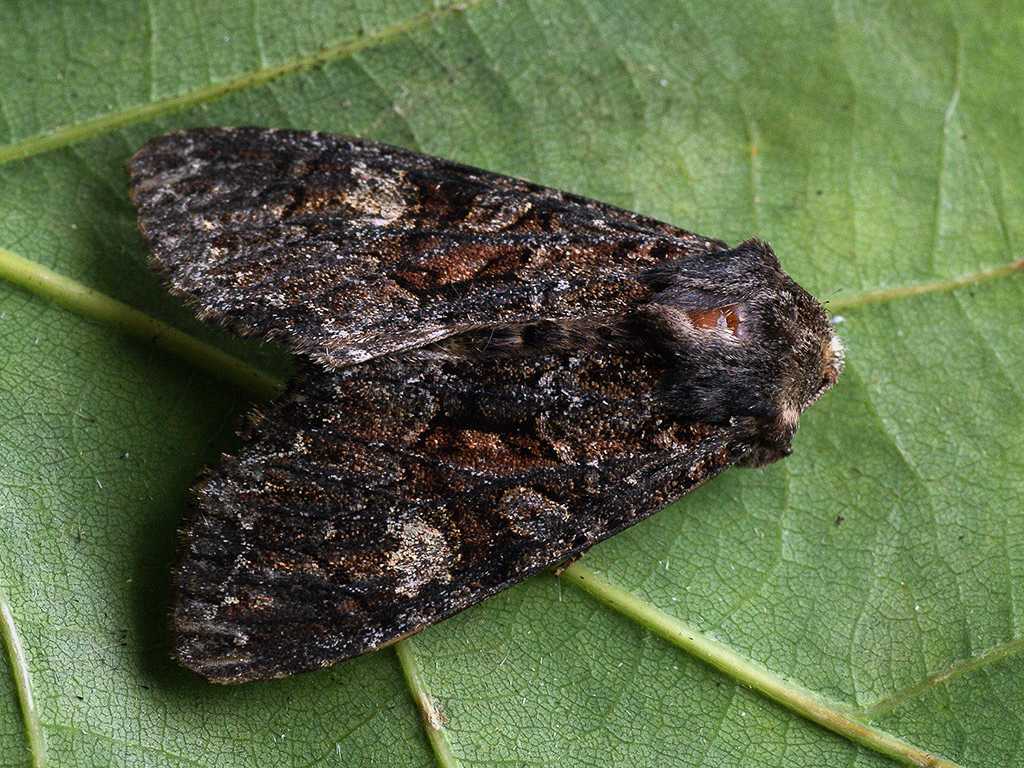
Photo © Ilia Ustyantsev
Mniotype adusta, the dark brocade, is a moth of the family Noctuidae. It was described by Eugenius Johann Christoph Esper in 1790. It is found throughout much of the Palearctic from Europe to Japan, China and Mongolia. It is also found in North America. The habitat consists of heathland, chalky downland, fenland, moorland and upland areas.
The wingspan is 42–48 mm. Forewing rufous-brown clouded with darker; the veins black dotted with white; a slight black mark below base of cell, and a short black streak from inner margin near base; inner and outer lines blackish, double, forming black white-tipped teeth on the veins; claviform stigma blackish, acute, lying on a black streak joining the two lines; orbicular and reniform reddish grey edged with black, the reniform with some whitish in outer half; submarginal line white preceded by black wedge-shaped marks; hindwing of male whitish with the termen grey; the cellspot and veins dark; much greyer in female. Of general occurrence throughout Europe and in Asia found in Armenia, Asia Minor, W. and E. Siberia, W. and E. Turkestan and Tibet; - the form vulturina Frr., from S. Russia, has the forewing darker and variegated with white; - duplex Haw. is also a dark but unicolorous form, occurring in Scotland and the North of England; - sylvatica Bell is a grey, obscurely marked, insect without brownish tinge, from Corsica; - septentrionalis Hoffm. is a small black form from Finland, the Baltic provinces and the Ural Mts., of which moesta Stgr. from Dauria is possibly a synonym; - vicina Alph. from Central Asia is paler, more violet brown, with the markings clearly expressed; anilis Bsd. is whitish, thickly dusted with black, with no trace of red-brown tinge.
Adults are on wing from May to July.
Larva grey green, suffused dorsally with reddish, with many small fine streaks; dorsal and subdorsal lines dark; spiracular line pale, whitish or yellowish; head greenish ochreous. The larvae feed on Sedum telephium, Calluna vulgaris, Vaccinium uliginosum, Solidago virgaurea, Artemisia vulgaris and Artemisia absinthium. Larvae develop from mid-June to early or mid-September. Pupation occurs in the spring.
Source: Wikipedia
The primary larval foodplants are Alder (Alnus glutinosa), birches (Betula spp.), Bladder Campion (Silene vulgaris), Bog-myrtle (Myrica gale), grasses, Great Willowherb (Epilobium hirsutum), Heather (Calluna vulgaris), Lodgepole Pine (Pinus contorta) and Sitka Spruce (Picea sitchensis).